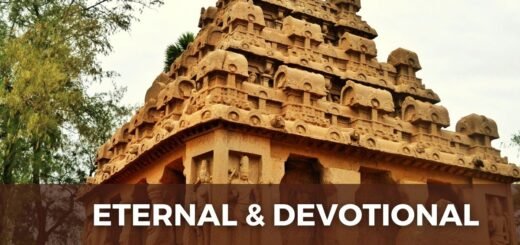2023 Navaratri Dasara Start End Date Telugu Panchangam
See below for the 2023 Navaratri Dasara Start End Date Telugu Panchangam, Pooja Details, How to celebrate dasara in Home, FAQs, and Details Here.
Navaratri and Dasara 2023 in Telugu: Dates, Significance, Home Pooja, and FAQs:
Navaratri and Dasara are among the most significant Hindu festivals celebrated with great fervor and devotion across India. In the Telugu-speaking states of Andhra Pradesh and Telangana, these festivals hold a special place in the hearts of the people. In 2023, Navaratri and Dasara will be celebrated with traditional pomp and grandeur, and this blog post will delve into the dates, significance, how to perform pooja at home, answer some frequently asked questions, and provide more details about these auspicious festivals. See below for the 2023 Navaratri Dasara Start End Date Telugu Panchangam.
Click here for the 2023 Navaratri Dasara Start End Date Telugu Panchangam and Durga Pooja Vidhanam
2023 Dussehra Dates Vijayadashami Puja Timings
2023 Navaratri Dasara Start End Date Telugu Panchangam:
Navaratri is a nine-night festival dedicated to the worship of Goddess Durga, while Dasara, also known as Vijayadashami, marks the triumph of good over evil. These festivals are observed during the bright half of the Hindu lunar calendar month of Ashwin (Ashwayuja), which usually falls in September or October. Let’s see below for the 2023 Navaratri Dasara Start End Date Telugu Panchangam.
In 2023, Navaratri will begin on Thursday, September 21st and conclude on Saturday, September 30th, with Dasara falling on Sunday, October 1st.
Significance of Navaratri and Dasara:
Navaratri: Navaratri, meaning “nine nights,” celebrates the divine feminine energy and honors Goddess Durga in her various forms. Each of the nine nights is dedicated to a different incarnation of the goddess, and devotees offer prayers, perform dances (such as Garba and Dandiya), and fast during this period. It symbolizes the victory of good over evil and the removal of obstacles from one’s life.
Dasara (Vijayadashami): Dasara marks the day when Lord Rama defeated the demon king Ravana, as narrated in the epic Ramayana. It signifies the triumph of good (Lord Rama) over evil (Ravana) and is considered an auspicious time to begin new ventures, seek blessings for success, and engage in the worship of Saraswati (the goddess of knowledge) and tools of one’s trade.
How to Perform Navaratri and Dasara Pooja at Home:
Celebrating Navaratri and Dasara at home can be a deeply fulfilling experience. Here is a simple guide on how to perform the pooja:
Items Needed:
- A small idol or picture of Goddess Durga or Saraswati (for Navaratri) and Lord Rama (for Dasara).
- Incense sticks, camphor, and lamps for aarti.
- Flowers, fruits, and prasad (offerings) for the deity.
- A clean and quiet place for the pooja.
Pooja Rituals:
- Setup: Place the idol or picture in the designated pooja area, and decorate it with flowers and garlands.
- Light the Lamp: Begin with the lighting of incense sticks and lamps.
- Chanting: Recite mantras and prayers dedicated to the deity you are worshiping.
- Offerings: Offer fruits, sweets, and other items as prasad to the deity.
- Aarti: Perform aarti by waving the lamp in front of the idol while singing aarti songs.
- Prayer and Meditation: Sit quietly, close your eyes, and meditate on the deity. Offer your prayers and seek blessings.
Repeat these rituals daily during Navaratri and on the day of Dasara. On Dasara, it’s also customary to perform Ayudha Pooja, where tools and instruments are worshiped.
Frequently Asked Questions (FAQs):
Q1. Can Navaratri be celebrated without fasting? Yes, fasting during Navaratri is optional. It is a personal choice, and many people choose to fast on specific days or throughout the nine days. You can also follow a fruit or vegetarian diet during this period.
Q2. Are there any specific colors to wear during Navaratri? Each day of Navaratri is associated with a specific color, and wearing that color is considered auspicious. For example, on the first day, you can wear red, and on the second day, white, and so on.
Q3. Can I perform the pooja if I don’t have an idol or picture of the deity? Yes, you can perform the pooja mentally by visualizing the deity in your mind. While having an idol or picture is traditional, the intent and devotion matter the most.
Q4. What is the significance of Ayudha Pooja on Dasara? Ayudha Pooja is the worship of tools and instruments. It is believed that by performing this ritual, the tools are blessed and their efficiency is enhanced. It is also a way to show gratitude for the tools that help in one’s profession.
Navaratri and Dasara are a time of joy, spirituality, and community. Alongside home poojas, people also participate in public celebrations, including cultural programs, processions, and the display of colorful dolls and figurines known as Golu in Tamil Nadu.
These festivals remind us of the victory of good over evil and the importance of spirituality in our lives. They are an opportunity to connect with our cultural heritage and seek the blessings of the divine.
In conclusion, Navaratri and Dasara are an integral part of the Telugu culture, bringing people together in devotion, celebration, and unity. Whether you choose to celebrate at home or join the community festivities, the essence of these festivals lies in faith, love, and the triumph of righteousness. May these auspicious occasions bring you peace, prosperity, and spiritual fulfillment in 2023. This is the details about 2023 Navaratri Dasara Start End Date Telugu Panchangam and details in brief.
Click here for the 2023 SSC Delhi Police Recruitment Notification Apply Online


